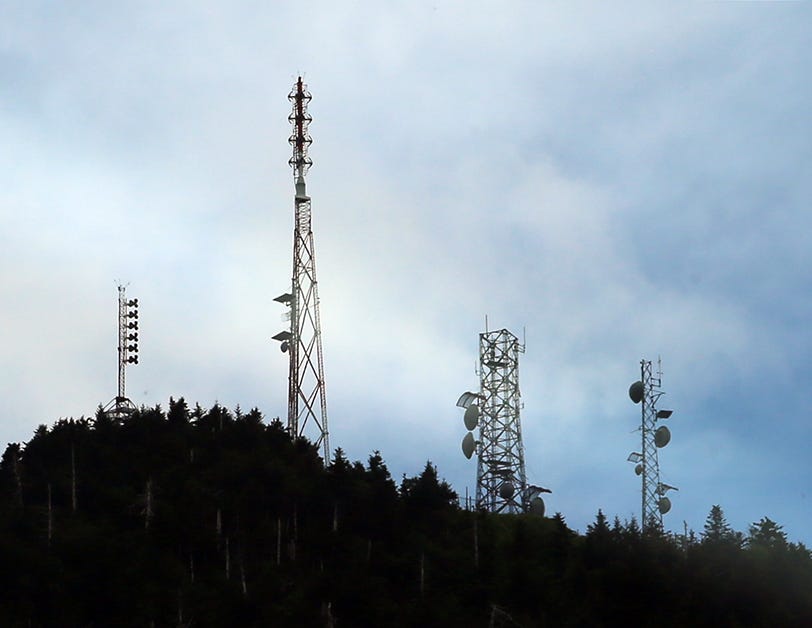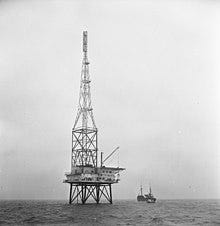Progressive Radio and Prog Rock
Psychedelically inspired, physiologically matured
What happens when you open the Doors of Perception and then stay inside them for a while? A few weeks ago in the rock history series, we talked about virtuosic musicians pushing the genre like John Bonham, Eric Clapton, and Jimi Hendrix.
Like jazz musicians, these talented players loved improvisation — inventing guitar and drum solos on the fly. Many of the drummers of this era (including John Densmore of The Doors) were, in fact, jazz drummers, adding that vocabulary and complexity to the types of grooves in rock music.
To account for all of this improvisation, songs grew longer. (Like the 12-minute version of Dazed and Confused I shared a few posts ago! It’s awesome!) Luckily, technology was ready for it, with the LP record, stereo audio, and FM radio growing more popular. The Beatles had helped define full records as art pieces, and the table was set for artists to truly explore. There was just one more piece of the puzzle:
Radio Was Really, Really Important
For a modern audience, it’s hard to grasp just how popular radio was. Music was scarce. Records were expensive. But radio flowed freely.
And up until the early 60s, AM radio (Amplitude Modulation) was king.
In the same way that “chamber” music was made for chambers; orchestral music for orchestra halls; and honkeytonk music for honkeytonk bars, the primary venue of early rock ‘n’ roll was AM radio.
AM Radio: Mid-Range Madness
So, I think it’s important to cover the technology and how it influenced the genre’s evolution. Essentially, AM — by definition — cannot sound as good as FM when it comes to music. AM audio is broadcast via changes in amplitude (aka volume / strength / power). But music has broad frequencies, so Frequency Modulation (FM), paints a bigger picture.
It’s like black and white versus color.
And when we got color TVs and movies, set design rapidly evolved. So when music got FM, it found a much broader palette. Again, radio was the primary venue for music, reaching more people than live concerts or records, so radio was what the music was primarily made to serve. Any changes in radio itself affected the main aspects of what an artist, producer, engineer, and record label did.
For fellow nerds, AM radio operates primarily in the medium frequency (MF) band, usually from 535 kHz to 1605 kHz. In layman's terms, it’s not all about the bass. Or the treble. It’s all mids.
That’s part of the reason why in lofi-hip-hop music filtering is heavily used to simulate AM radio and the nostalgic qualities that filtering brings. I use that a lot in my music too. It’s a fun way to snap between old and new. Lofi and hifi (and sometimes wifi). It’s part of the reason why even modern films can opt for black-and-white. It’s a vibe. Especially when used as contrast.
And if you listen to old records like Buddy Holly, notice that the midrange sounds awesome. They were totally focused on making the song crush it on the radio. That’s what got them paid back then.
AM has some strengths too. Like podcasts today, you don’t need as high of quality for a simple, voice-focused broadcast. AM can also broadcast really far, especially at night, including far into rural areas. That’s why AM still has a place in talk radio / crackly folk or country music. It’s part of the charm.

High-Fidelity FM Radio (Frequency Modulation)
In contrast to AM, FM modulates the frequencies, aka what music is made out of! So there’s less interference and way more bandwidth. It also lets us use the innovation of stereo sound to full effect.
So now instead of small, midrangey music – We have bass. We have treble. We have stereo effects. The game has changed.
Pirate Radio
Buying vinyl was expensive, but the radio was free, floating in the air. So many people invested their entertainment dollars into a high-quality stereo to listen to these FM broadcasts.
And they'd tune in, listening to underground, countercultural DJs. Some called their radio formats “progressive.” (Prog Rock anyone?)
Several radio stations broadcast without licenses, with some actually setting their antennas on boats or islands:
(If you’re interested in pirate radio history, here’s a great time capsule of a website, dedicated to preserving this odd chapter in music.)
More freedom for DJs meant records with a longer playtime. And frankly, from the DJs perspective, longer songs meant less work. I mean, just throw on Inna Gadda Da Vida and have a smoke break for 17 minutes.
(My dad was a DJ in this era and said he had different songs cued up for bathroom breaks. Also, Iron Butterfly was from San Diego. Hometown represent!)
Enter Pink Floyd
The freedom of DJs led to entire albums being played on air. One band that benefited from this deep dive was Pink Floyd.
Formed in London in 1965, Pink Floyd was Syd Barrett (guitar, vocals), Roger Waters (bass, vocals), Richard Wright (keyboards), and Nick Mason (drums). Syd’s mental health declined, and David Gilmour was brought in as a second guitarist, ultimately replacing Syd.
The Dark Side of the Moon (1973)
Psychedelic music fans should just listen to their entire discography, but I want to focus on Dark Side.
Incalculable amounts of music fans have referenced this album as the one that made them “get it.” The moment that music really started to click. Where the LP transcended a soundtrack of life and became the meaning of life.
Why is that? Why do so many people hear this album and find a passion for recorded music?
Reinventing the Recording Studio as an Instrument
In the beginning, recording was the art of transferring live, acoustic audio onto wax. Les Paul and Buddy Holly and then The Beatles and their contemporaries pushed the meaning of the studio, and combined otherworldly techniques like vocal doubling and tape looping to create sounds no one had ever heard before.
Technology advanced.
Now, we had 16 tracks to work with. The Beatles started on a 2-track. The majority of their catalog was recorded on a 4-track. Pink Floyd and their sound engineer, Alan Parsons, transformed the recording studio (Abbey Road Studios) into an instrument itself. It’s hard to describe and easier to just listen:
The Synthesizer
The electric guitar sparked the rock ‘n’ roll revolution. A futuristic technology made to push the boundary of sound, the synthesizer marked a new chapter.
As we talked about in the last rock history post, The Beatles used the Moog Modular Synthesizer on Abbey Road:
So what was a synth?
And why did that sound start to become so ubiquitous in the 1970s and in prog rock?
Modular Synthesis
Before 1970, synths were predominantly modular, meaning discrete analog systems that patch into one another.
You’d have one module that generated sound, through oscillators. Those sound wave generators are the building blocks of the tone. (There are different types of waves, but we can save that for a future deep dive.) In the early analog world, these oscillators are controlled by the amount of voltage; the voltage amount (and therefore pitch or frequency) is changed via variable capacitors or variable resistors (or potentiometers). But to the musician, you just turn the knob.
Then you have voltage-controlled filters. The filters change the harmonic content of the signal. For example, you can use a filter to remove high frequencies (bright sounds), to create a fatter or bassier sound. The Moog low-pass filter is used to this day for this purpose. It sounds so good!
There are a bunch of other modules like amplifiers (volume), envelopes (change the attack/decay/sustain/release — (here’s a pod I did on ADSR), LFOs (oscillators that affect other things — often used to create pitch wobble or changing filters), and noise (like the white noise people fall asleep to). In the modern day, there are so many modules. Some people spend hundreds of thousands of dollars building their rigs.
You then use patch cables to connect the modules, effectively creating a big machine of individual parts.
The Mini Moog (1970)
A modular synth is hard to tour with. It’s big. It’s bulky. It’s sensitive.
It’s also hard to remember exactly what you did in the studio. There are a lot of wires to account for!
The Mini Moog, on the other hand, was made for musicians. It was self-contained — no need for patch cables. It was way smaller — and easier to tour with. And it had a built-in keyboard, allowing musicians without technical modular synth expertise to get started right away. It also sounds great. I want to make music with one. (Please buy my music, so I can lol. Or consider a paid subscription to this Substack. 😌)
Here’s the beauty:
Emerson, Lake & Palmer (ELP)
The British supergroup, ELP, showcased Keith Emerson’s keyboard chops, originally touring with a full Moog modular synth, and eventually turning towards the MiniMoog after the modular synth kept overheating on stage. The band was so hotly anticipated that the Atlantic Record’s chief said they “could sell out 20,000 seaters before they even had a record out.”
At the end of this song, you can hear Emerson take a solo on the Mini in 1970 — one of the first Moog solos ever recorded:
Genesis
Genesis was formed in 1967 in England with Peter Gabriel on vocals… and when Peter left in 1975, Phil Collins took over. Quite the band and legacy!
Genesis had a penchant for the symphonic, experimenting with time signatures, dissonant chords, and otherworldly lyrical themes:
Yes
The prog rock explosion was the mature form of the British Invasion. Yes began in London in 1968 and hit the scene with complex arrangements and virtuosic solos, melding rock, classical, jazz, and symphonic.
This bass line is sick:
Jethro Tull: One Footed Flute-ing and Toot-ing
Guess where Jethro Tull was from… yep, England. Frontman and flute extraordinaire, Ian Anderson, took the symphonic bent of prog to the next level, with eccentric songs and a quirky stage presence.
Sorry about how long all these prog songs are…
Rush: Canada’s Darlings
Formed in Toronto (!!!) in 1968, guitarist Alex Lifeson, bassist/vocalist Geddy Lee, and drummer John Rutsey set out to make a band like Led Zeppelin and Cream. But when Neil Peart took over drumming duties from John in 1974, his trippy and philosophical lyrics and intricate playing pushed the band deep into the prog rock rabbit hole.
Here’s a medley of my favorite Rush songs:
I hope this musical revue of prog helped cement your understanding of the sub-genre! I’d like to mention a few of my other favorites that are vaguely in the prog/experimental rock world:
Kansas, check out “Carry On Wayward Son” and “Dust in the Wind”
Frank Zappa and the Mothers of Invention, check out the 1969 album, Freak Out!
Captain Beefheart and His Magic Band, if you’re into the weird, listen to Trout Mask Replica. Many artists think it’s the perfect palate cleanser. There is no music quite like it…
To dig into the nitty-gritty of the science of frequencies that underpin synth sonic architecture, listen to my podcast about how the math mojo of hearing happens:
Thanks for reading, internet friends,
Scoob








I always heard FM and AM and I finally learned what the meaning was. It was also cool to learn about how music evolved too clearer sounds with different devices.
This was such a cool deep dive into how technology shaped rock music. I never realized how much AM vs. FM radio actually influenced song length, production choices, and even whole genres like prog. The way you connected improvisation, longer LP formats, and the rise of synthesizers made everything click into place. It’s wild to think about DJs playing full albums on air and how that opened the door for bands like Pink Floyd, Genesis, and Rush to experiment.